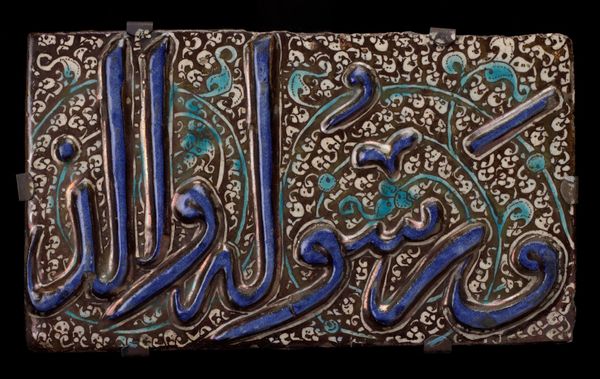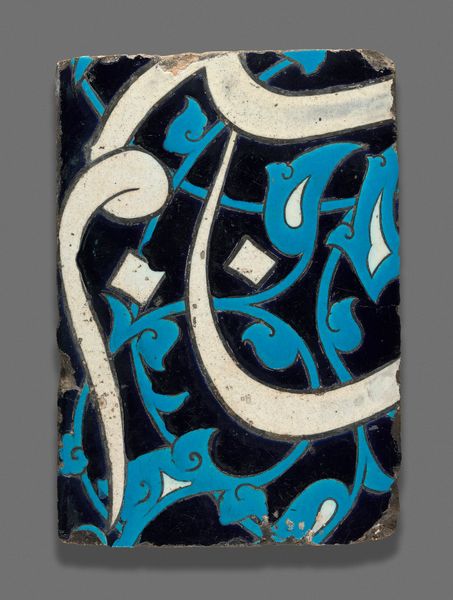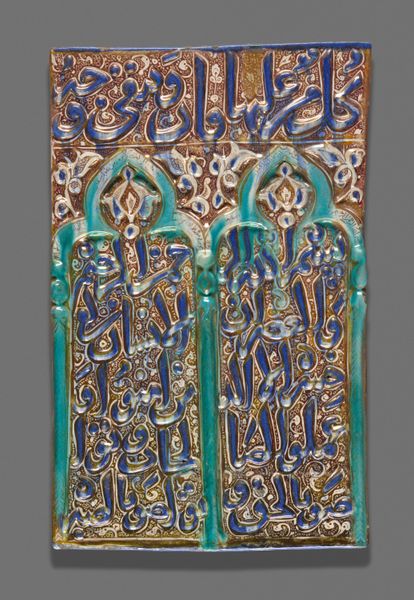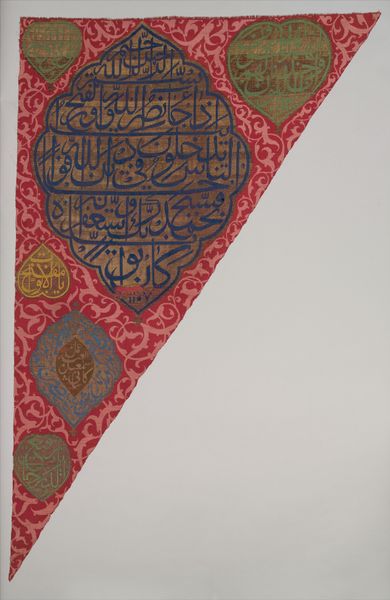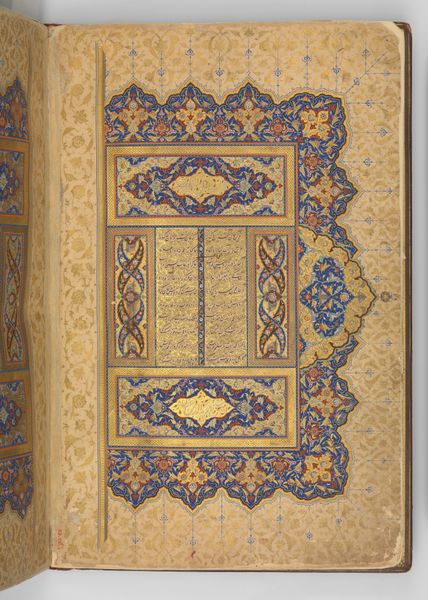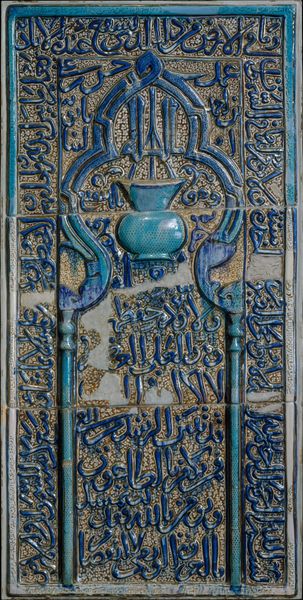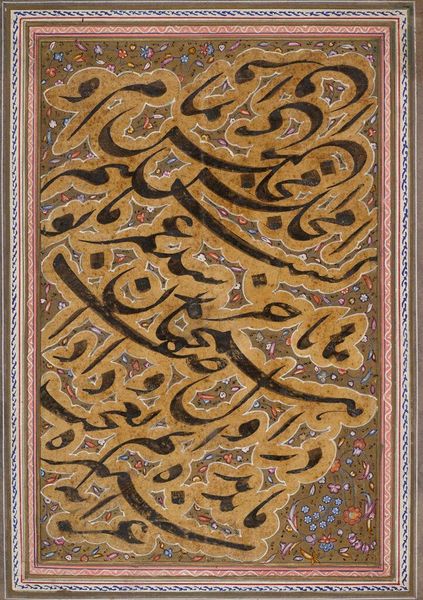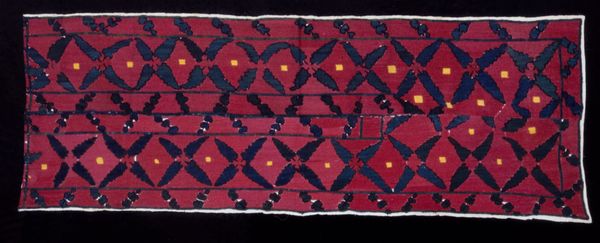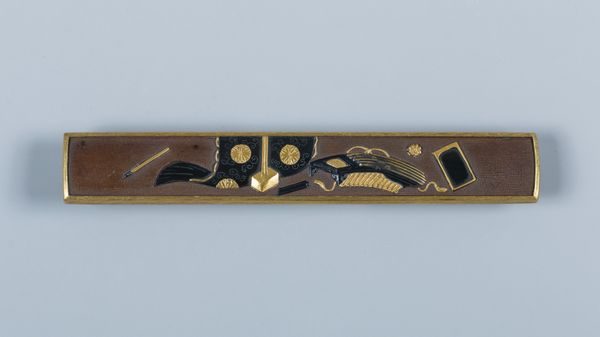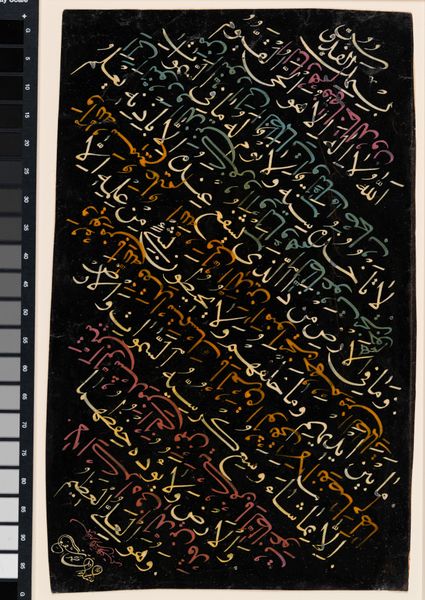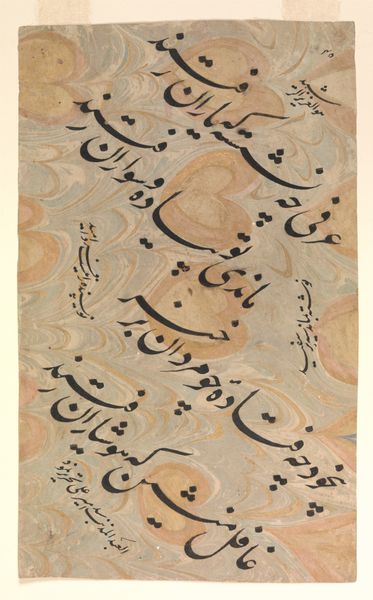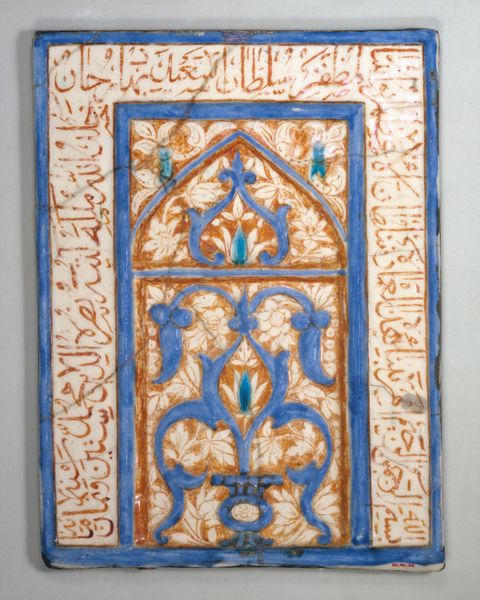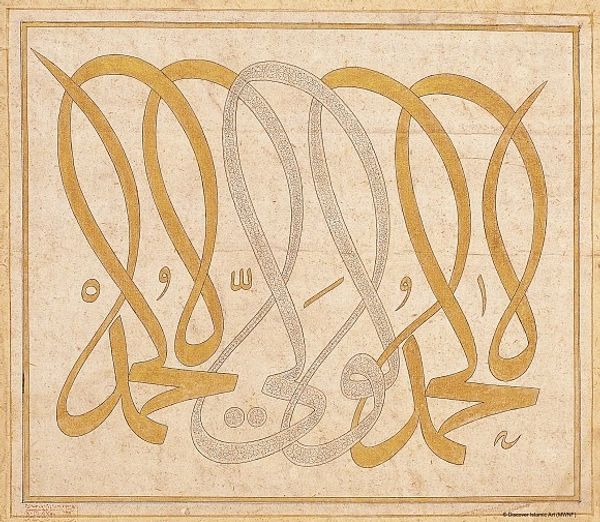
ceramic, textile
#
medieval
#
asian-art
#
ceramic
#
textile
#
geometric pattern
#
geometric
#
intricate pattern
#
pattern repetition
#
islamic-art
#
decorative-art
#
calligraphy
Dimensions: 18.3 × 34.8 × 4.2 cm (7 3/16 × 14 1/8 × 1 5/8 in.)
Copyright: Public Domain
Curator: It’s breathtaking, isn’t it? This cobalt blue Ilkhanid dynasty tile, crafted in the early 14th century, just radiates a quiet elegance. Editor: Indeed. My first impression is one of restrained opulence. The deep blue ground and shimmering gold calligraphy hint at royal or religious patronage, yet the floral filigree introduces a delicate touch. What material insights can you glean? Curator: Well, this ceramic tile speaks volumes about the advanced kiln technology of the time. The firing process to achieve that consistent, rich blue glaze was certainly a complex undertaking. Also, consider the painstaking precision involved in creating the raised calligraphic relief, likely molded or meticulously hand-carved. It’s more than decoration; it’s sophisticated labor rendered permanent. Editor: And the function of this tile within a larger architectural setting tells a rich story too. Where exactly would something like this have been placed, and what statement did it make within the context of a building’s overall decorative scheme? Perhaps part of a palace or a mosque, reflecting the political and religious power structures of the Ilkhanate? Curator: Almost certainly. High-status buildings used such tiles to express sophistication and legitimize their rule. I also think it reflects the Silk Road's impact; Persian artists blending local techniques with influences from across the Mongol empire, the ceramic trade and labor practices were significantly changed, facilitating new methods of creating color and ornamentation in ceramic work. Editor: The artistic exchange is so central to understanding the significance. The political use of calligraphy as ornamentation in these monuments underscores its ability to communicate power visually, blending beauty with purpose and shaping both public perception and cultural identity. This tile is not simply decoration. Curator: Absolutely. And looking at the detail—that floral scroll work, those subtle variations in the glaze—you truly grasp the hands-on skills embedded in this object. This isn’t just art, it's craft, tradition, and material all interacting. Editor: The artistry of the artisan shaping visual statements of the time period... it invites contemplation on power and dedication to creating cultural heritage for the eyes and hearts of the observers throughout the passage of time. Curator: Yes, absolutely. Thank you for unpacking with me this journey through artistry and time!
Comments
No comments
Be the first to comment and join the conversation on the ultimate creative platform.
